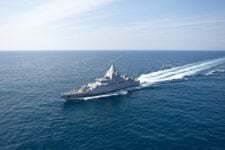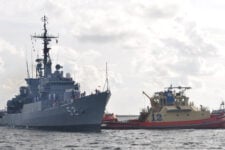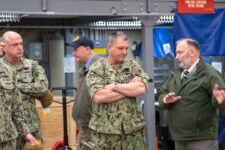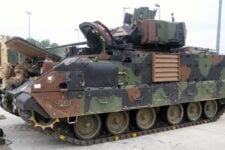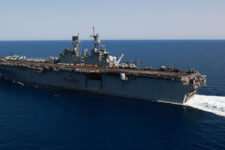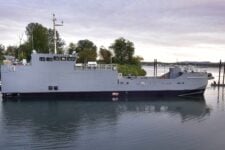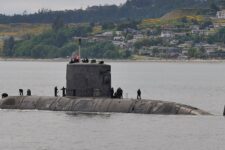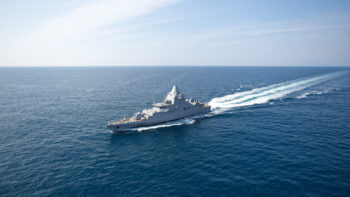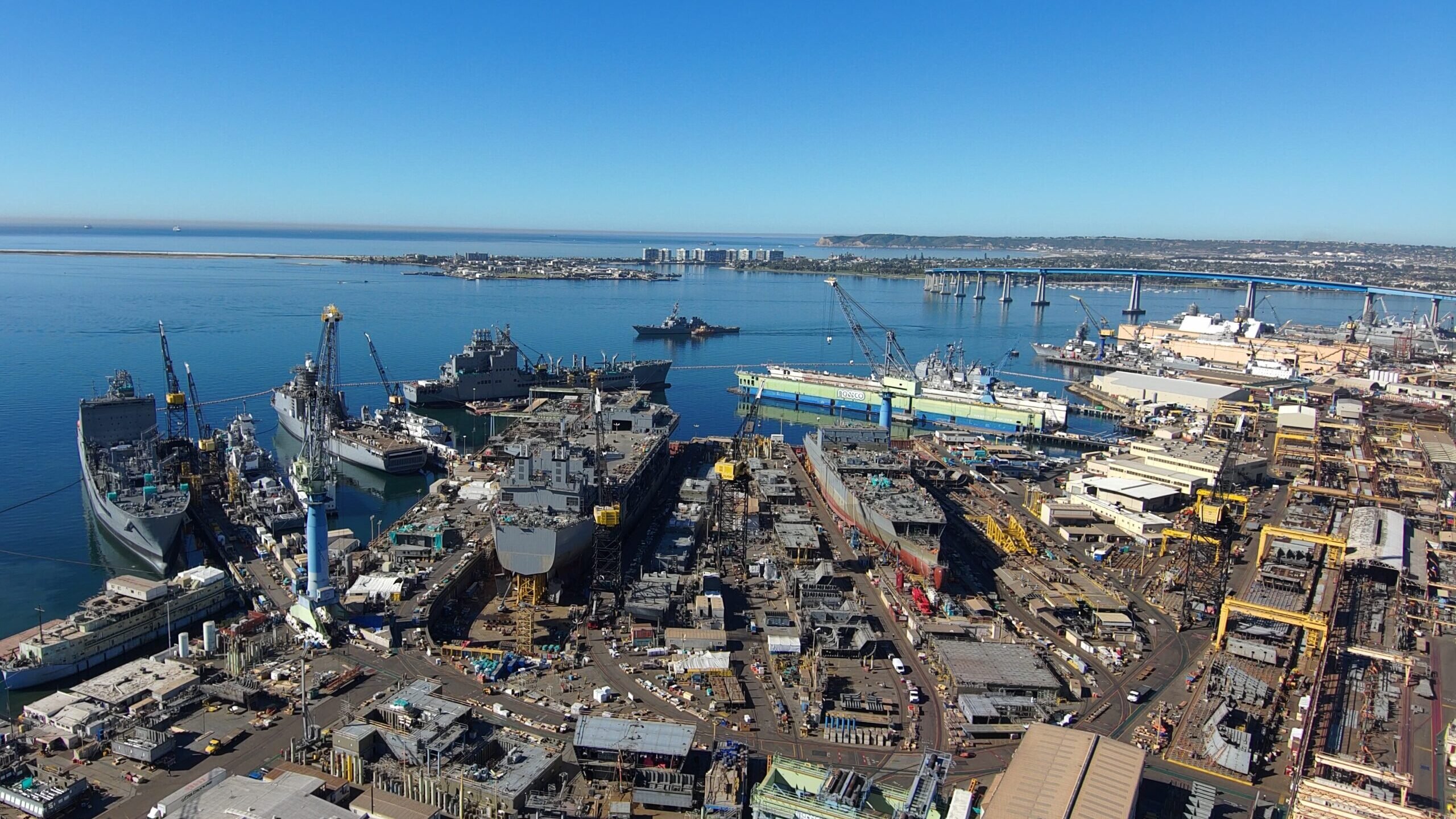
General Dynamics NASSCO has made its name in shipbuilding by being the Navy’s go-to partner for auxiliary vessels, but half of its revenue comes from ship repair work. (GD NASSCO.)
SAN DIEGO: General Dynamics NASSCO’s docks here have a full house of Navy ships right now. It ranges from the first-in-class replenishment oiler John Lewis (T-AO 205), which just got back from sea trials, to the future expeditionary sea base John Canley (ESB 6), still under construction, and the cruiser Princeton (CG 59), with sailors nearby awaiting their next underway period.
It’s a lot of work, requiring a lot of manpower. And during a tour of the facility on a rainy Tuesday morning, a company official was blunt in the yard’s biggest problem: NASSCO can’t hire new workers fast enough to outpace the people leaving or retiring from the industry.
“That’s our biggest challenge, straight up, is people right now,” Peter Radzicki, manager for new construction strategic planning at NASSCO, told Breaking Defense.
On top of the labor shortage, the shipyard is also contending with the incessantly delayed federal budget, a fight that defense industry has become accustomed to, but one that is particularly painful in the era of the coronavirus pandemic.
“The big thing is they know they want a bunch of these oilers — getting beyond just six on order is important for us to get stability and what we’ve got to forecast for the future,” he said. If the shipyard and the Navy “can’t get to a clear understanding of what the remaining ship workload is, we slow down. We don’t progress.”
The national labor shortage that arrived with the coronavirus pandemic has been felt by most industries. But there are several reasons why it hits shipbuilding particularly hard. The first is the highly skilled workers it requires who receive extensive training just to get on the job.
In the era of the coronavirus, another problem that has arisen are vaccine mandates. The tight quarters required for shipbuilding make social distancing either impractical or impossible. A shipbuilders’ union in Maine, where Bath Iron Works is located, made headlines in October 2021 over objections to the federal government’s vaccine mandate for federal contractors.
Radzicki did not discuss specific personnel numbers during an interview, but he did say NASSCO has defaulted to following guidance and requirements from California health authorities, which he said are usually stricter than the federal government.
“Attrition is more than it’s ever been. People are moving from job to job. You have more options for employment, which are remote that people are jumping on,” he said. “We’ve brought in a lot of people, trained a lot of people, but at the same time, we’ve seen them go out the door.”
During the Tuesday visit, NASSCO had five future Navy vessels undergoing various stages of construction, including three replenishment oilers and two expeditionary sea bases.
While the shipyard is best known for the various auxiliary vessels it produces for the Navy, roughly half of its revenue comes from ship repair work, a portfolio also mostly booked by the US Navy. Two cruisers, a destroyer and a landing dock ship were all in maintenance this week.
Moving forward, NASSCO is closely watching the Navy’s moves on a variety of new vessels for which the service has sought out industry’s advice, such as cable repair vessels and sealift ships. The company is also considering buying a new floating dry dock, to replace theirs which is approaching the end of its service life. Radzicki said he is hopeful the new year would see the uptick in hiring the company has yearned for but was straightforward about the impact the pandemic has had.
“We’re now at a point where, optimistically we’re thinking that pandemic efforts are quieting — that the pandemic is quieting down, but we really haven’t seen it with workforce growth,” he said. “It has really kept our workforce at a constant level.”
